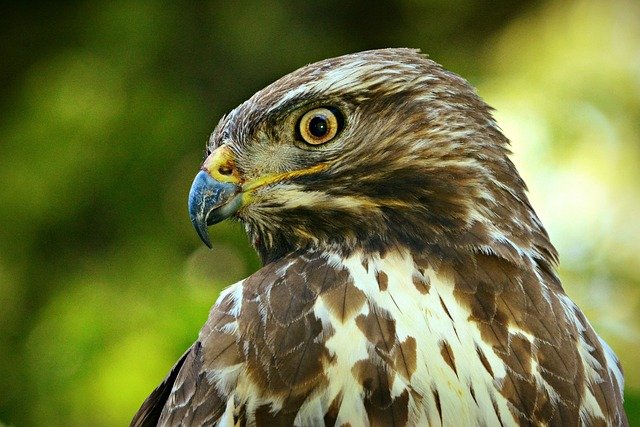All about Birds
Five Fun Facts About Buzzards
Did you know that the average lifespan of a buzzard is around 20 years? Or can they fly at speeds of up to 56 miles per hour? Here are five fun facts about buzzards that you may not know!
Buzzards are a type of vulture!

Although many people consider buzzards to be birds that hang around cemeteries waiting for fresh carrion, they’re a species of vulture. Vultures are scavenging birds of prey and belong to the same family as hawks and eagles – although they don’t look like their close relatives. Buzzards, in particular, are members of the genus Buteo, characterized by short necks, short tails, and broad wings.
They are typically found in temperate areas such as Europe and North America. When seen from a distance, buzzards look very similar to hawks. However, if you look closely, you can spot several subtle differences. For instance, their tail feathers are shorter than those of hawks and have distinct white wingtips. Interestingly, all vultures use thermals (warm air currents) to fly. Buzzards tend more towards flapping their wings rather than soaring with the current. So if you ever spot one of these birds gliding through the sky, it’s likely of the Buteo variety!
They have very good eyesight and can spot their prey from far away

Buzzards are an interesting species of raptor, equipped with keen eyesight that allows them to spot their prey from far away. Unlike most birds of prey, buzzards don’t depend on speed or stealth to hunt their food. They can fly slowly and still be effective hunters. Instead, buzzards rely on scanning the ground from a high altitude and spotting potential meals down below.
This kind of vision is incredibly sharp; buzzards are known for identifying small mammals up to 10 miles away. Once a buzzard has spotted its prey, it swoops in for the kill, seizing whatever animal it’s seen and carrying it off for a meal. That’s why buzzards are so skilled at locating food quickly and efficiently. Their incredible eyesight gives them a major advantage in securing a meal!
Buzzard’s beaks are curved so that they can tear flesh easily

You may have heard of buzzards, the buzzy-sounding birds flying overhead or circling and spotting prey from afar. But did you know that buzzards have curved beaks designed to make long-distance feeding a breeze? They are perfect for ripping meat off bones when they find prey. Which makes buzzard beaks one of Nature’s best designs. The two parts of the beak come together like a pair of pincers. So buzzards can easily grab onto the flesh quickly.
Furthermore, the top part of their beak is more narrow than the round bottom half. Buzzards can tear fur easily and hold onto small pieces while they eat. All this combined makes it an amazing tool for these birds who like to feast on carrion or swoop up small rodents in midair. Their curved design makes buzzard beaks truly adapted for tearing through the toughest flesh.
Buzzard usually eat small mammals, but they will also eat reptiles, amphibians, and insects

Buzzards are an important part of their ecosystems, serving as scavengers and hunters. These birds of prey can eat almost anything, and their diet is quite diverse. As you might expect, small mammals are a favorite food source for buzzards. They also feed on rodents, reptiles such as snakes and lizards, amphibians like frogs and toads, and various types of insects.
In addition to eating smaller animals, buzzards can scavenge carrion or pick off the carcasses of larger creatures left behind by bigger predators. Because their diet is so varied, buzzards play an important role in helping to maintain the balance of life in their habitats by controlling the population of smaller animals that could otherwise become too plentiful or cause serious damage to other plants and creatures in the area. It’s easy to see why these large birds are such a valuable species.
They sometimes build their nests in trees, but they also nest on the ground

Buzzards are a group of birds of prey, and they build their nests in various ways depending on their habitat. Some buzzards nest in trees, especially those that live in wooded or semi-wooded areas; however, other buzzards in open or grassy areas tend to build their nests on the ground. Ground buzzard nests can be quite large and consist mostly of sticks, but buzzard nest shape and size can vary depending on the species.
Most buzzard nests are cup-shaped; some build platform-style nests, and others use plants to make a canopy around their nest area. In addition, buzzards often reuse and repair existing nests year after year. Whether made high in a tree or built low to the ground, buzzards use nested construction to create strong and secure homes for themselves and their young. Such ingenuity combined with adaptability makes buzzard nesting an impressive feat of engineering every season.
Buzzards are fascinating birds, and although they may seem scary to some people, they have a lot of beneficial qualities. Their keen eyesight allows them to spot prey from far away, and their curved beaks make it easy for them to tear flesh. Additionally, buzzards are very versatile in where they build their nests; they can choose between trees and the ground. If you want to learn more about other bird species, check out our blog posts! We have tons of information that will interest both experts and amateurs alike.

